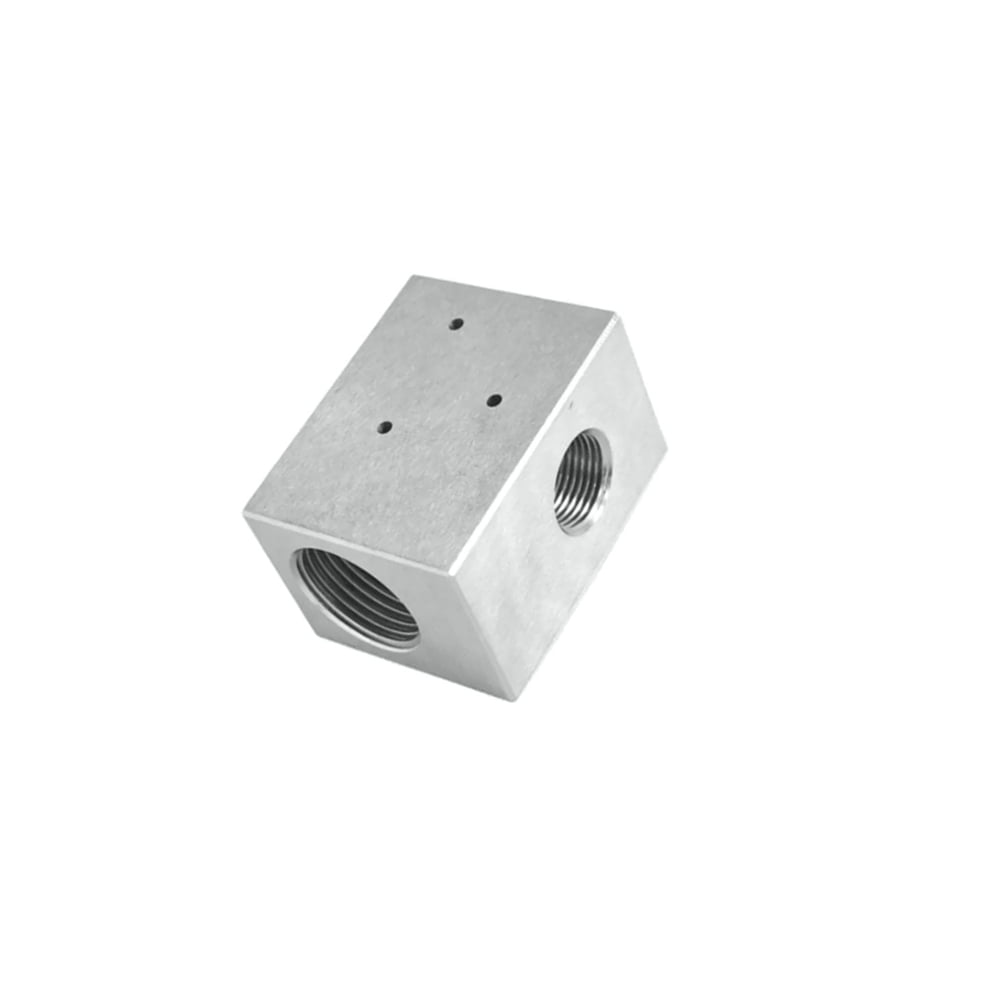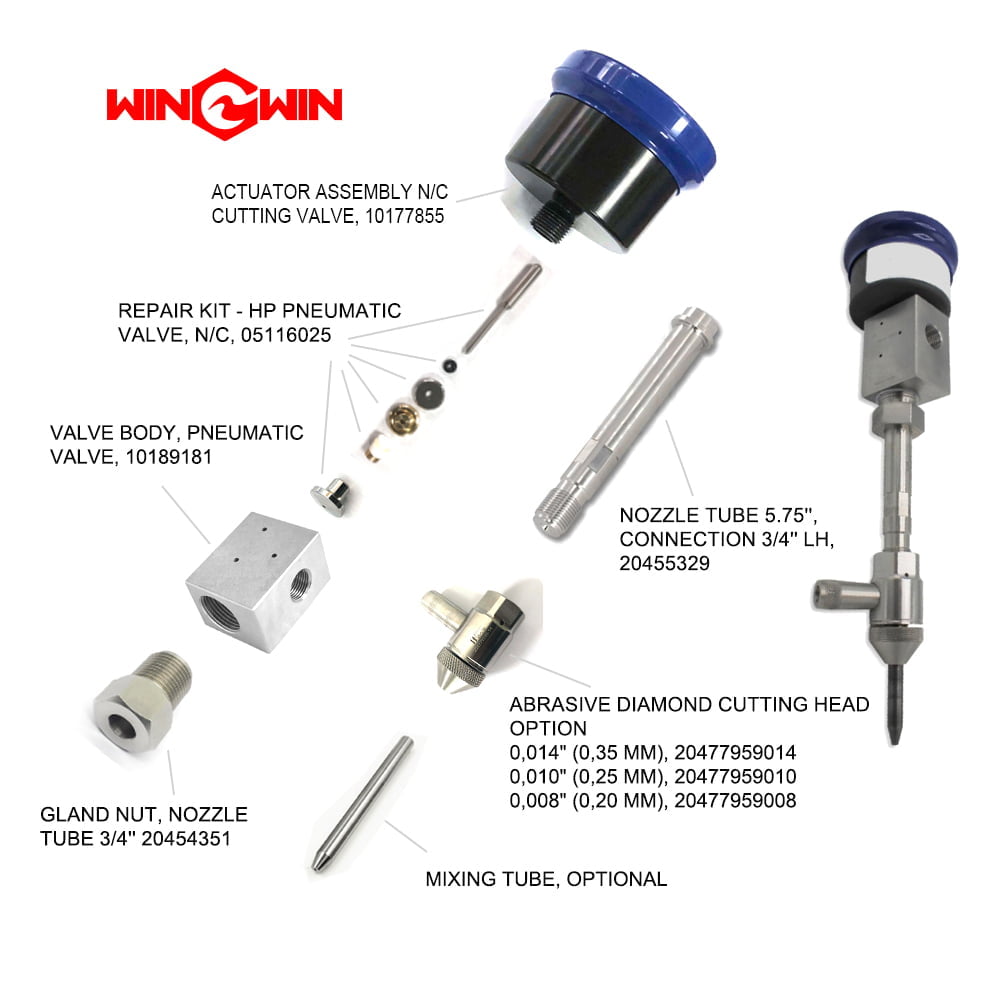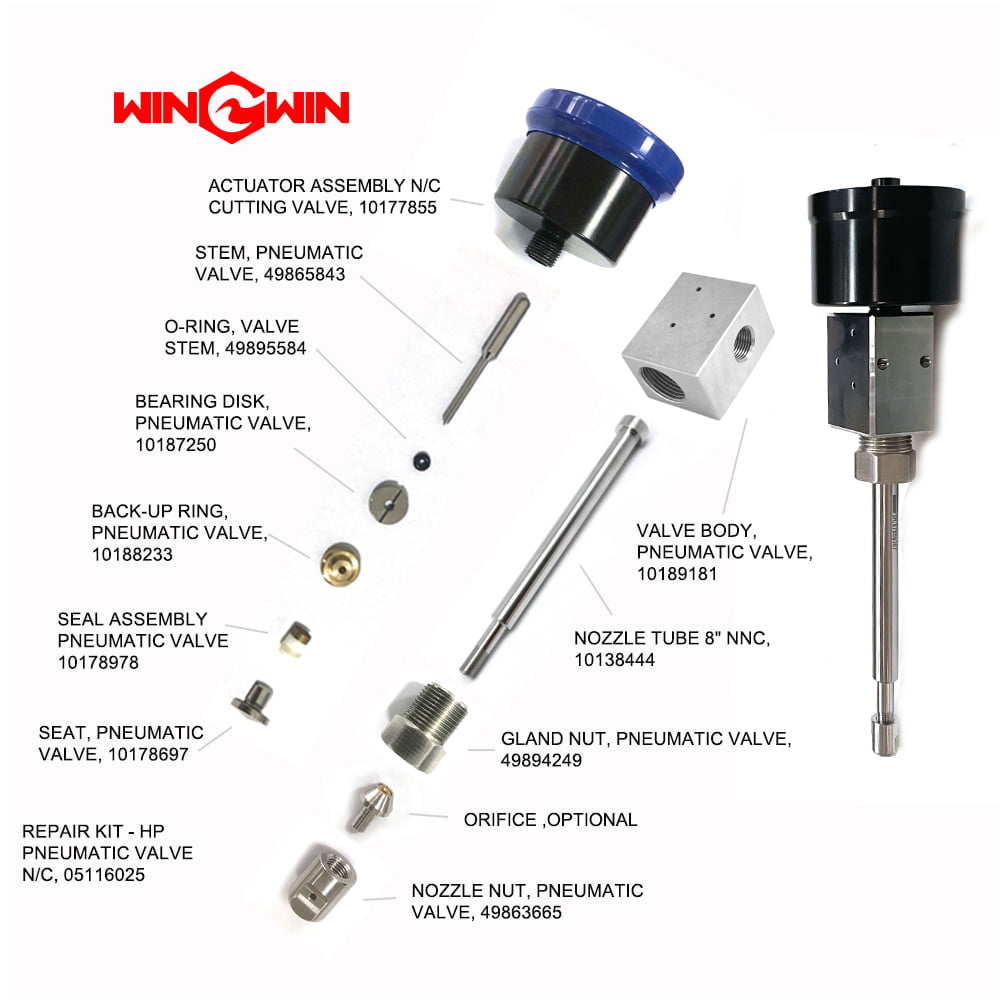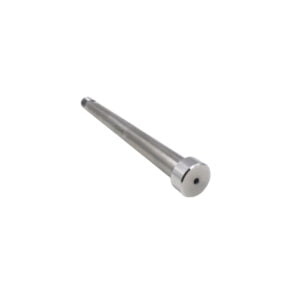Description
Waterjet cutting head spare parts pneumatic valve body
Item number: 10189181
Description: used on the waterjet cutting head, connected with the normally closed valve actuator with 2-port


FAQ of the waterjet technology – What is the difference between waterjet cutting and laser cutting, this is a question our customers often ask us about.
Waterjet cutting head and laser cutter head are two different processing tools, they have their own advantages and disadvantages, and are suitable for different materials and occasions. Here are their main differences:
Principle: The waterjet cutting head uses high-pressure water jets to convert the water pressure into high-speed water flow through the nozzle to cut the material in a cold state, and sometimes mixes abrasives in the water to enhance the cutting ability. The laser cutter head uses the high-energy laser beam generated by the laser to focus the laser on the surface of the material through optical elements such as reflectors and focusing mirrors to perform thermal cutting on the material, and at the same time use the auxiliary gas to blow away the slag.
Advantages: The advantage of the waterjet cutting head is that it can cut any material in a cold state, without changing the physical and chemical properties of the material, without generating thermal effects, arc marks or oxide layers, with good cutting surface quality, and basically no secondary processing is required. Safety and environmental protection, wide application range. The advantage of the laser cutter head is that it can perform high-speed and high-precision cutting on thin steel plates and some non-metallic materials, with low equipment investment, low operating costs, simple operation, and high degree of automation.
Disadvantages: The disadvantages of the waterjet cutting head is the cutting speed is slow, and it is limited by thickness and shape, some materials that are afraid of blisters cannot be cut. The disadvantage of the laser cutter head is that it is not ideal for cutting some materials, such as non-ferrous metals and alloys such as aluminum and copper, especially for cutting thicker metal sheets, the cutting surface is not ideal, or even impossible to cut. In addition, laser cutting will cause arc marks and cause thermal effects, which may affect the performance and quality of materials.






